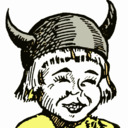In 1804, Meriwether Lewis and William Clark set on their expedition across North America. A part of their mission was to record everything about the lands they were to travel through. One of many things they recorded was the flora they came across. They collected, pressed, and carried home more than 200 specimens, many of which had been unknown to Western science at the time. While traipsing through Idaho and the Pacific Northwest they found many flowers they had not seen before. The book Common to This Country: Botanical Discoveries of Lewis & Clark by Susan H. Munger uses journal entries of Lewis and Clark to show when and where they made their “disoveries,” while also discussing a bit about the flowers themselves. Beautifully illustrated by Charlotte Staub Thomas, here are some of the flowers Lewis and Clark found on their own #floweryfriday.
Lewis and Clark came across Lupinus Sericeus, also known as Silky Lupine, while at Camp Chopunnish, in present-day Idaho. This pale lavender flower can be found across western North America, from British Columbia down through Montana, South Dakota, Wyoming Colorado, Arizona, and New Mexico. It can also be found in Washington, Oregon, Idaho, Nevada, and Utah.
When Lewis found Clarkia Pulchella, commonly called Ragged Robin, on the edge of the Clearwater River in Idaho, its description became one of his most detailed. He wrote in one of his journals, “I regret very much that the seed of this plant are not yet ripe and it is proble will not be during my residence in this neighborhood.”
When descending the Bitterroot Mountains, Lewis and Clark came across Camassia Quamash, or Camas. A part of the lily family, Camas can bloom with pale blue to deep violet flowers in the spring. It is native to the Pacific Northwest.


![Common to this County: Botanical Discoveries of Lewis and Clark [1]](https://objects.lib.uidaho.edu/harvester/small/lewisandclarkbotany_1_sm.jpg)
![Common to this County: Botanical Discoveries of Lewis and Clark [2]](https://objects.lib.uidaho.edu/harvester/small/lewisandclarkbotany_2_sm.jpg)
![Common to this County: Botanical Discoveries of Lewis and Clark [3]](https://objects.lib.uidaho.edu/harvester/small/lewisandclarkbotany_3_sm.jpg)
![Common to this County: Botanical Discoveries of Lewis and Clark [4]](https://objects.lib.uidaho.edu/harvester/small/lewisandclarkbotany_4_sm.jpg)